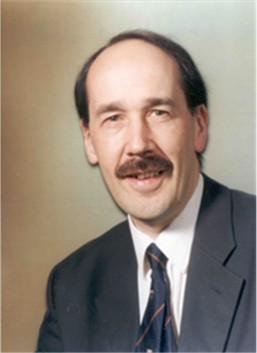【百家大讲堂】第120期:Modelling of Microwave Sea Clutter
讲座题目:Modelling of Microwave Sea Clutter
主 讲 人:Prof. Simon Watts( University College London, UK)
时 间:2018年10月24日(周三) 09:00
地 点:中关村校区中心教学楼1楼报告厅
主办单位:研究生院、信息与电子学院
【主讲人简介】

Prof. Simon Watts graduated from the University of Oxford in 1971 (MA), obtained an MSc and DSc from the University of Birmingham in 1972 and 2013, respectively, and a PhD from the CNAA in 1987. He was deputy Scientific Director and Technical Fellow in Thales UK until 2013 and is a Visiting Professor in the department of Electronic and Electrical Engineering at University College London.
He is author and co-author of over 65 journal and conference papers, a book on sea clutter and several patents. He was chairman of the international radar conference RADAR-97 in Edinburgh UK. He was appointed MBE in 1996 for services to the UK defence industry and is a Fellow of the Royal Academy of Engineering, Fellow of the IET, Fellow of the IMA and Fellow of the IEEE.
【讲座摘要】
This series of lectures will cover the modelling of microwave radar sea clutter and the applications of the models that have been developed to radar design and testing.
A basic understanding of radar and radar clutter is assumed. The lectures will first cover the models used to characterise sea clutter. Then some of the methods used to set adaptive detection thresholds in clutter will be described, followed by the techniques used to predict performance with these detectors. Next the computer simulation of sea clutter returns, both coherent and non-coherent, will be discussed. Finally, the uses of sea clutter models in the specification and measurement of real radar performance will be described, followed by a description of some other uses of clutter models throughout the radar design cycle.
It is estimated that the lectures will take about 6 hours, with further time for questions as required.
1. Sea Clutter Models (94 slides)
• Observed characteristics of sea clutter
• Statistical models of sea clutter
• Empirical models of reflectivity
• Empirical models of sea clutter statistics
• Empirical models of Doppler spectra
2. Adaptive Detection and CFAR Techniques (75 slides)
• Non-coherent methods
o CA CFAR
Many variants
o CFAR loss and gain
• Distribution-free detectors
• Coherent methods
o Doppler analysis
o Post-Doppler whitening
o Pre-Doppler whitening
3. Performance Modelling and Prediction (98 slides)
• Analytic prediction with K distribution
• Performance of coherent detectors in sea clutter
• Predicting performance of coherent detectors in sea clutter
• The effects of covariance matrix mismatch on CFAR detection in sea clutter
• K distribution shape parameter estimation
• Comparison of coherent and non-coherent detection performance.
4. Simulation of Sea Clutter (44 slides)
• Single Channel Coherent radar
• Multiple Phase Centre – Linear Array
• Multiple Phase Centre – ∑/Δ
5. Specification and Measurement of Radar Performance (34 slides)
• Introduction
• Specifications
• Adaptive Radars
• Specification of Adaptive Radars
• Performance Prediction
• Measurement of Performance
• Modelling and Simulation
6. Uses of clutter models (23 slides)
• Performance prediction
• Radar design
• Measurement of radar performance
o Detection-Range Display
